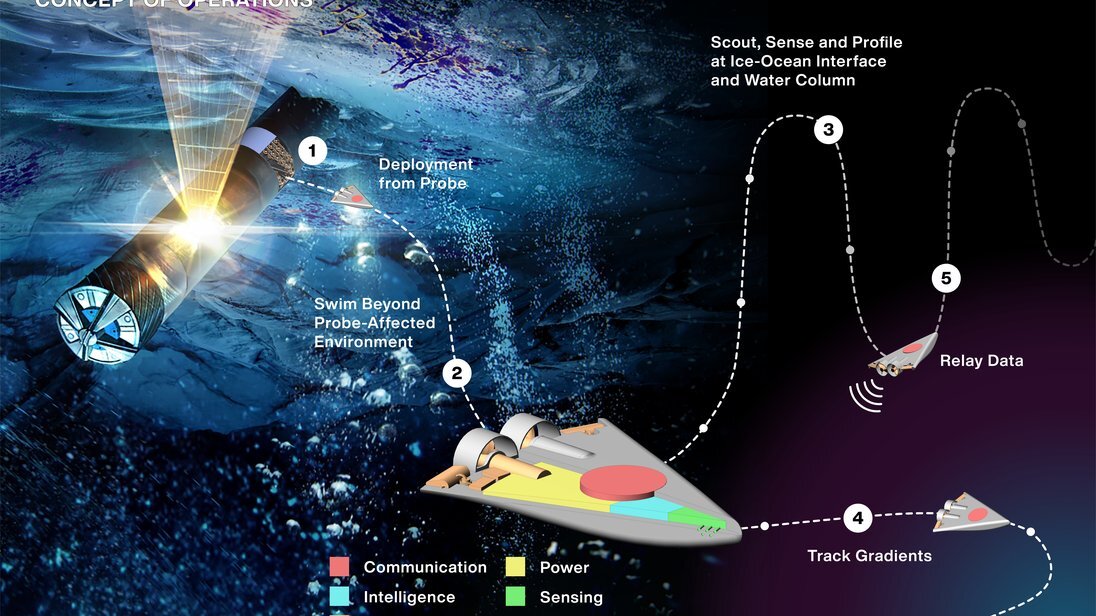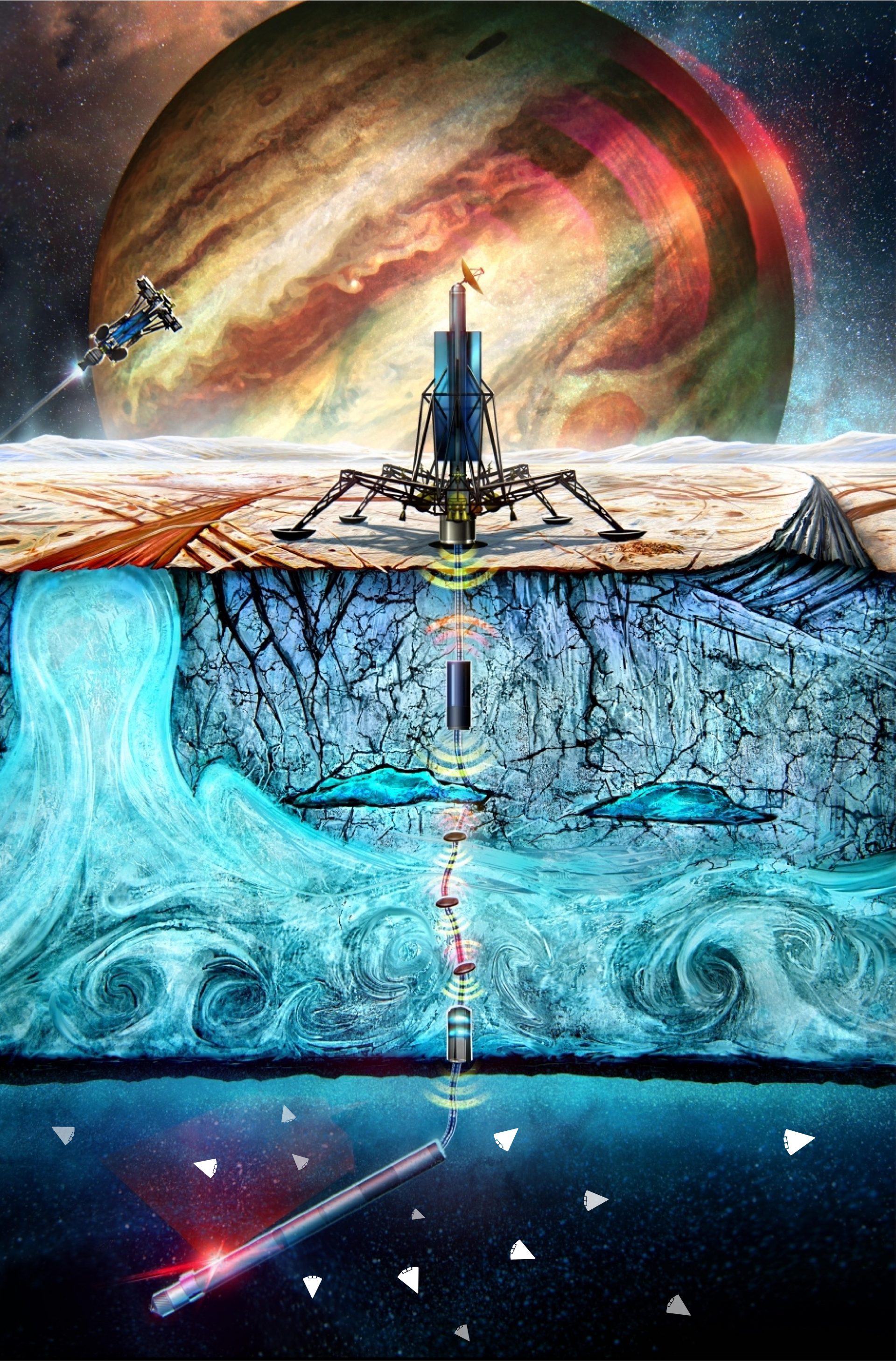NASA has approved the continuation of work on the SWIM (Sensing With Independent Micro-Swimmers) project. Its goal is to develop a swarm of micro-robots designed to study the subsurface oceans of the icy satellites of giant planets, in particular, Europe.
Swarm of micro robots for the ocean of Europe
The SWIM project was selected for implementation in 2021 as part of the NASA-funded NIAC (NASA Innovative Advanced Concepts) program. It is designed to support innovative ideas in the field of astronomy and cosmonautics, which can be implemented in the coming decades.

The essence of the project is to explore the subsurface oceans using a swarm of 3D-printed robots. Their length will be 12 cm, volume — from 60 to 75 cm3. Approximately four dozen of these micro-robots can be loaded into the cryobot being developed under the SESAME program. Its length is 10 cm, diameter is 25 cm, it should reach the ocean of Europe by melting ice. Micro robots will take no more than 15% of the internal volume of the cryobot, which will allow other scientific instruments to be placed inside it.
When the micro-robots get into the ocean, they will analyze its temperature, salinity, acidity level and pressure, and will also look for biomarkers. Ultrasound will be used to ensure communication between the devices.
Prospects of the SWIM project
NASA recently allocated 600 thousand dollars for SWIM, which will be enough to continue the work for the next two years. During this period, the authors of the project will have to build a prototype of one of the robots, as well as create a model for controlling their swarm.

In 2024, NASA will launch the Europa Clipper probe to Jupiter, one of the main tasks of which will be to study the characteristics of the subsurface ocean of Europe. In the future, the aerospace administration plans to send a landing mission to the satellite. It is possible that it will bring to life the achievements of the SWIM project.
Recall that scientists have recently found deposits of sulfur dioxide in Europe.
According to https://www.jpl.nasa.gov
Follow us on Twitter to get the most interesting space news in time
https://twitter.com/ust_magazine
